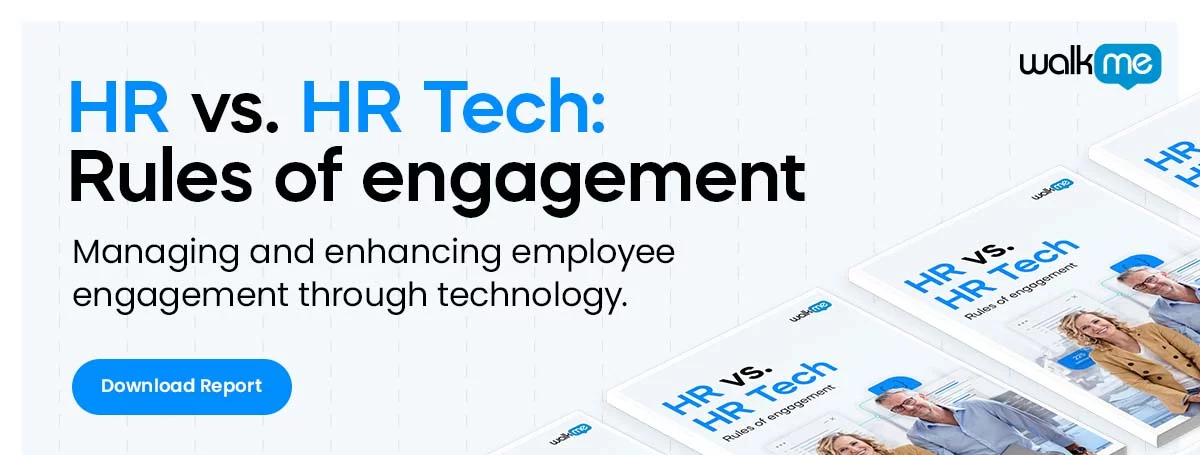
As employees now expect smarter, more connected interactions with their employers, it is no surprise that more companies are looking to increase their HR tech spending to address the future world of work. This statistic is supported by a PwC survey which demonstrated that businesses planned to increase HR technology spending throughout 2022 by focusing on areas that included improving employee experience, intelligent recruitment and tailoring an individual’s learning process. HR Analytics is a data-driven strategy that can drive employee and business outcomes like these.
What Is HR Analytics?
HR Analytics involves collecting and analyzing raw data to enhance the performance of a business and its workforce. Raw data on its own will fail to provide your business with any valuable insights. But, once gathered and analyzed, in line with solving a business goal, it allows a company to make more accurate decisions, reducing the need for guesswork. In a post-Covid era, this technological solution ensures that you remain agile and keep up with people’s changing expectations.
Why Is HR Analytics Important?
With every industry and the HR sector needing to continue to meet the demands of a digital era, HR analytics can help you derive valuable insights from data to fulfil a business’s strategic goals. These insights could:
- Improve your retention rate: Analyzing employee survey data can help businesses understand why employees stay or leave a company.
- Refine employee performance/experience: Learn more about what motivates your staff and how well they work with others to create a plan of improvement. You could also use HR analytics insights to track an employee who has not performed well over the last four months so that you can determine how your business can change its behaviour.
- Make a fundamental change to hiring practices: Use an HR analytics AI tool to automatically process online resumes to find the best candidates for a position. This tool could also help you identify potential candidates with attributes that match those of your top-performing employees. Additionally, in the long term, create a strategic workforce plan that takes account of regular periods of understaffing so that you avoid employee burnout during busier periods.
- Enable better employee development and wellbeing: Monitor the impact of any initiatives on employee development and wellbeing. For example, VIVID used Excel to analyze data from their staff survey, external benefit providers and existing HR systems to monitor their workforce’s wellbeing after a merger. Following this analysis, it realised that it needed to offer more resources to improve the wellbeing of its employees. These new resources included a new wellbeing app and an updated Employee Assistance program. Following these changes, VIVID avoided £100,000 in costs over the next 12 months as more employees used the app and its mental health sick days reduced from 2.2 to 1.5 days.
How Can You Implement An HR Analytics Solution?
- Define A Business Problem You Want To Resolve
Start your HR analytics process by finding a business problem that needs a solution. For example, you might choose to improve the productivity of high-performers at your organization, better the retention numbers or reduce the levels of absenteeism among staff. It is essential to focus on only one problem at a time. If needed, you can create a list of business problems to obtain executive sponsorship to tackle later. Once you have a business problem you want to focus on, you must present your plan for the project and any resources needed for approval to the leadership team.
- Determine The Metrics You Need To Measure Success
Based on an organization’s key business and workforce performance indicators, you need to propose metrics that can evaluate the success or failure of these indicators. These could include:
- Training efficiency: Using various data points that can track an employee’s performance, promotions as a result of training and test scores from training programmes, your business can evaluate the effectiveness of the training you offer.
- Voluntary turnover rate: If an employee leaves your organization out of their own accord, you can measure this by dividing the number of individuals who left involuntarily by the total number of employees. If there are many voluntary leavers, you could then conduct a follow-up employee survey to discover the current gaps in employee experience.
- Absenteeism: If you want an insight into how productive or happy an employee is, you could divide their number of required workdays by the number of days missed.
- Design Your HR Analytics Process
Once your project is approved, you need to recruit the right people and explain their roles and responsibilities for this particular project. For example, team members could include data scientists, business leaders, team leaders or translators who can interpret insights from analytics and turn business problems into analytical questions that can be investigated. Team members will also require training on any HR analytics tools or models used and so make sure that you fully involve them in all parts of the process to reduce resistance to changes.
- Obtain, Collect And Store Relevant Data
To prepare your raw data for analysis, you need to make yourself aware of all of the data your organization currently holds. This could include employee data on:
- On-boarding
- Training
- Retention
- Engagement
- Turnover
- Salary and promotions
- Performance
Then, encourage your team members to work with you to transfer this data to a unified, central online hub. Continue to keep this data updated so that future projects can analyze information based on one place. Before you start analysing information to solve a business problem, conduct a data audit of this existing data. Is this data sufficient for resolving your business problem? If not, what further data do you need to fill in the gaps?
- Analyse The Data In Line With Your Business Problem
Analyze the required data in line with your current measures of success to create insights for your stakeholders. These are the three types of ways that HR analytics can operate depending on a business’s capability or maturity level.
- Descriptive analytics: Businesses at the beginning of their HR analytics journey start with this process of employing historical and current workforce data to recognize trends and relationships. It provides a response to the question ‘what happened?’ but does not dig any deeper.
- Predictive analytics: This process uses historical data to predict possible scenarios that encourage better strategic decisions.
- Prescriptive analytics: This is the most advanced use of HR analytics. It uses the results from your descriptive and predictive analytics processes to determine recommendations for the user’s next course of action. For instance, if you use an online learning platform for employees, you could utilize prescriptive analytics for recommending further courses based on what they have completed in the past and their future career goals and interests.
- Communicate Recommendations And Implement The Next Steps
Turn your data insights into practical recommendations for your leadership team so that they can understand how to solve a particular business problem. Then, if the leadership team agrees to these recommendations, inform team leaders of any changes to a process to be made and create a plan to monitor the success of these changes.
Final Thoughts
An HR analytics data strategy can be the starting point for an enhanced level of data decision-making which ensures that employee data can be analyzed for the benefit of the organization and its workforce. While implementing an HR data analytics strategy can take time, you will gain a more holistic knowledge of your entire business. You will also learn how to operate more ethically, strategically and responsibly when handling the data of your employees.
WalkMe Team
WalkMe spearheaded the Digital Adoption Platform (DAP) for associations to use the maximum capacity of their advanced resources. Utilizing man-made consciousness, AI, and context-oriented direction, WalkMe adds a powerful UI layer to raise the computerized proficiency, everything being equal.



